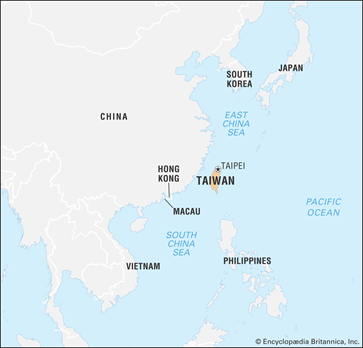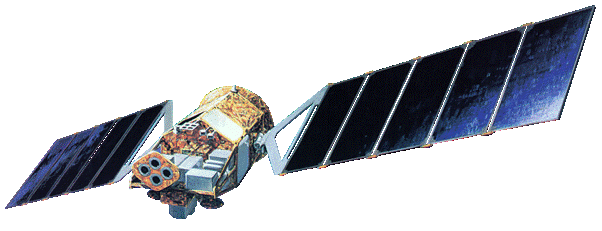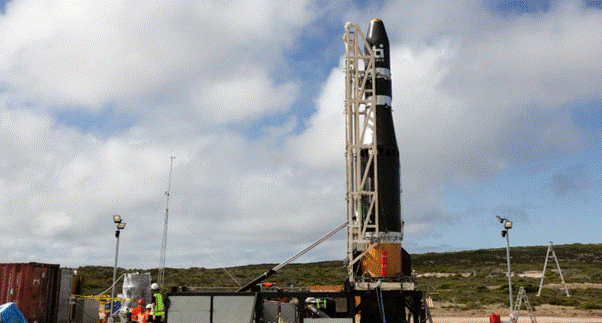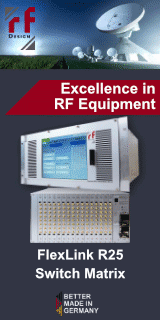Taiwan: A Serious Up-and-Coming Player in the Space Industry
by Aurélie Gillet
Taiwan, a small island in the Pacific Ocean with a population of 23.5 million, is not the first place that comes to mind when thinking of space powers. With a historically limited domestic space sector, Taiwan’s space ambitions have been limited to a few technologically impressive, but still niche missions, with this despite an economy that has developed several world-leading high-tech sectors, and a world-leading supply chain for certain critical components.
by Aurélie Gillet
Taiwan, a small island in the Pacific Ocean with a population of 23.5 million, is not the first place that comes to mind when thinking of space powers. With a historically limited domestic space sector, Taiwan’s space ambitions have been limited to a few technologically impressive, but still niche missions, with this despite an economy that has developed several world-leading high-tech sectors, and a world-leading supply chain for certain critical components.
powers. With a historically limited domestic space sector, Taiwan’s space ambitions have been limited to a few technologically impressive, but still niche missions, with this despite an economy that has developed several world-leading high-tech sectors, and a world-leading supply chain for certain critical components.
This trend of limited space ambitions has been changing, however, and Taiwan may soon become a key player in the global space ecosystem. The unique development model applied to the Taiwanese space industry has already seen tangible positive consequences, with selected electronics manufacturers having become SpaceX suppliers for example; it is also very likely to enable Taiwanese electronics manufacturers to move up the scale of the global space industrial chain in the near future. Taiwanese commercial space companies, while only emerging, may also benefit from enhanced state support in view of Taiwan’s political will to carve a niche in an up-in-coming industry - despite existing political tensions with China, especially when it comes to the launch sector.
Ambivalent Space Ambitions in a Tense Political Climate
Taiwan’s space programme began in 1991 with the creation of the National Space Organization (NSPO). This is much later than China and Japan, who launched their space programmes in the 1950s, yet coincides with the launch of fellow Dragon economies' space programs in South Korea and Singapore, in the late 1980s-early 1990s. With a history of only 30 years, the Taiwanese space program is arguably still nascent. If significant progress has been made in Earth Observation, remote sensing and space science, the Taiwanese launch capabilities are lagging both global and regional standards.
The complexity of Taiwan’s political context is reflected in its ambivalent motivations within the space sector. In particular, the nature of Taiwan’s governance is a highly contentious issue in the context of cross-strait relations: if the island is de facto an autonomously governed territory, it is not officially recognised as an independent state under international law and its formal independence constitutes a red line for the Chinese Communist Party. In the preamble of China’s 1982 Constitution, Taiwan is defined as being “part of the sacred territory of the People’s Republic of China.1” The latter has even dedicated a Department of its Ministry of Foreign Affairs to Hong Kong, Macau and Taiwan affairs2.
The tense cross-strait political context has had an impact on Taiwan’s space program. Indeed, Taiwan has been reluctant to develop launch capabilities due to the dual use of the required technology, rocket technology being easily transformable into ballistic missiles or other military technology. It is suspected that the United States themselves, primary military ally of the island, have pushed Taiwan to refrain from developing such capability on the grounds that it could potentially give China a reason for intensifying military actions around the island3.
Until recently, Taiwan’s efforts have hence been focused on developing satellite payload capacities, delegating launch to foreign companies, and have been led primarily by governmental, traditional actors. Yet, the past few years have seen the development of a commercial space sector in Taiwan, with several commercial companies being created, including commercial launch companies. The island may also be able to leverage its strengths in advanced manufacturing and semiconductors: if electronic components Made in Taiwan were to become as indispensable to the space sector as it is to the semiconductor sector, the island would have an immense role to play in the space industry.
Taiwan’s Government Space Program: From Technology Transfer to Autonomy
Tasked with overseeing the implementation of the Taiwanese space program, the NSPO has been driving the development of space technology and industry throughout the three phases of the programme. If the first and second phases were focused on building up basic capabilities through technological transfer, the third phase aims at the industrialization of space technology and at achieving greater autonomy in the sector through leveraging Taiwan’s industrial base.
Phase 1: Building up Space Technology and Fostering Indigenous Capabilities
The first phase, which lasted from 1991 to 2006 and consisted mainly in three missions, was dedicated to building Taiwan’s capacities in satellite manufacturing, including bus and payloads, through technology transfers with the US (FORMOSAT-1 and -3) and France (FORMOSAT-2), for a total budget of NT$19.7 Billion (US$638 million)4 .
  |
| FORMOSAT-1 |
FORMOSAT-1, a 400kg low-earth-orbit scientific experimental satellite, was almost entirely designed and built by the US company TRW (Space & Electronics Group); as part of the technology transfer agreement, a group of NSPO engineers received training in satellite “design, testing, and operation/control”5. Most payloads were also jointly developed: while the Ionospheric Plasma and Electrodynamics Instrument (IPEI) was jointly built by the University of Texas at Dallas and Taiwan’s National Central University, the Experimental Communication Payload (ECP) was developed by Microelectronics Technology Inc., Trans System Inc. (two Taiwanese commercial companies) and Japan’s NEC Corporation. The same scheme was employed for FORMOSAT-2. The bus of the 700kg FORMOSAT-2 remote sensing satellite was built by Astrium SAS, a European leader in the aerospace manufacturing industry (of which Airbus Defense and Space is the successor since 2013) - with participation of Taiwanese engineers. Astrium SAS also built the Remote Sensing Instrument (RSI), while the other payload, the Imager of Sprites and Upper Atmospheric Lightning (ISUAL), was jointly developed by four institutions: the NSPO, Taiwan’s National Cheng Kung University, the University of California at Berkeley and Japan’s Tohoku University.
The last mission of phase 1 of the Taiwanese space program consisted of jointly building a LEO constellation of six 60kg Earth Observation microsatellites, the FORMOSAT-3/COSMIC constellation, with the United States. The US$100 million project, of which Taiwan covered 80%6, was led by the NSPO and the US’ University Corporation for Atmospheric Research (UCAR), and was supported by other institutions7. The satellite platform was the product of joint efforts between Orbital Sciences Corporation (US) and the NSPO, with the integration and testing performed by the latter8. All three main payloads were designed and built by US companies.
For each of those missions, several Taiwanese companies were involved in the process so as to build indigenous capacities. Among them, Victory Industrial Corp., Acer Sertek Inc. and Shihlin Electric & Engineering Corp. participated in all three missions; the first by providing S-band antennas and other communications equipment, the second by providing electronic devices such as on-board computers (OBC), and the third by providing components for the solar panels9. Other indigenous companies included Tatung System Technologies Corp., Aerospace Industrial Development Corp., Taiwan Aerospace Corp. and others. The objective of phase 1 was for Taiwan to acquire the basic technology and expertise to subsequently develop its own satellites through cooperation with US, French and other international institutions and companies. It also sought to foster the development of indigenous capabilities, through involving both research centers and commercial companies (mainly involved in the electronics industry) in each mission.
The second phase of the Taiwanese space program, extending from 2004 to 2018 for a budget of NT$25.9 Billion (US$800 million), marked a turning point - of which the significance was yet attenuated by political factors.
The FORMOSAT-5 mission, aimed at the development of the 450kg eponymous satellite, was the first to be indigenously developed and manufactured - as noted on the NSPO website, “FORMOSAT-5 is the first space program that National Space Organization (NSPO) takes full responsibility for the complete satellite system engineering design including payload(s)” 10. The success of the mission, completed by the launch of the remote sensing satellite from the US in 2017, can be qualified as a technological feat: Taiwan’s capacity to indigenously develop such technology only 25 to 26 years after the very beginning of its space program is indeed rather impressive.
In contrast, the FORMOSAT-7/COSMIC-2 mission was not conducted by Taiwan alone, but in cooperation with the US, and enabled Taiwan to further strengthen its capabilities in spacecraft development, design and integration of mission systems, as well as constellation mission operations11. Besides those two missions, the NSPO signed contracts for the development of three cubesats: IDEASSat to be developed by the National Central University (NCU), YUSAT by the Department of Transportation Science of National Taiwan Ocean University (NTOU) with the participation of MoGaMe Mobile Entertainment, and NutSat by the National Formosa University12. If the first two have been successfully launched in January 2021, the latter has yet to reach orbit13.
It is important to note that such developments concern only satellite technology. Originally, the FORMOSAT-6 mission did plan for the indigenous development of launch technology: the FORMOSAT-6 satellite, expected to be developed by NSPO and Taiwanese universities, was indeed supposed to be launched by a Taiwan Small Launch Vehicle (TSLV) designed by the Chung-Shan Institute of Science and Technology (CSIST) - which used to be under the island’s Ministry of National Defense's Armaments Bureau, responsible for the development of weapons and dual-use technologies. Yet the project was aborted, most likely because of political pressure from the US, concerned about China’s reactions vis-a-vis the development of dual-use technology14.
Phase 3: Leveraging Taiwan's Unique Strengths to Industrialise Space Technology
The third phase of the Taiwanese space program distinguishes itself from the two other ones by its scale and ambitions. With a budget of NT$25.1Billion (US$814 million) to be spent from 2019 to 2028 (over 10 years, instead of 15 years for the two previous stages), phase 3 plans for the development of a constellation of six prototype high-resolution optical remote sensing satellites (FORMOSAT-8), two ultra-high resolution smart optics remote sensing satellites as well as two synthetic aperture radar (SAR) satellites15. As far as the FORMOSAT-8 mission is concerned, Taiwan will rely on its domestic industry as well as on the technology previously acquired to indigenously design and manufacture each of the six satellites. If the overwhelming focus on Earth Observation technology constitutes a continuation with the two previous phases, other projects mark expanding ambitions.
Taiwan indeed plans to develop its own LEO constellation as per the Beyond 5G program (B5G), to which NT$4 Bil. (US$141 million) will be dedicated. The first communications satellite is to be launched by 2025, after which six other will follow16. The project is led by Taiwan’s Industrial Technology Research Institute (ITRI) - famous for having incubated key tech companies such as TSMC17-with the help of 18 local companies, “including prominent producers of antennas, radio frequency components, mobile phone chips and network communication equipment”18. The objective of this program is highly strategic: through involving indigenous companies in a programme of greater scale, Taiwan seeks to further help the latter develop and test key technologies (including components, modules and subsystems19), so as to boost their competitiveness and enable them to integrate the global space industry supply chain.
Phase 3 is also oriented towards the Moon. Taiwan seeks to develop, with foreign partners, a satellite which would be placed in orbit around the Moon20. Such a project illustrates Taiwan’s ability to cooperate with other countries on an equal basis - and shows the extent to which the Taiwanese space program has progressed over the course of 30 years, at least as far as satellite technology is concerned.
Taiwan’s Space Development Model: Early Successes, Great Economic Potential and Remaining Challenges
Throughout the three phases of Taiwan’s space program, the Taiwanese government sought to enable selected Taiwanese commercial companies of the electronics industry - most of which are original equipment manufacturers (OEM) - to adapt their technology to space-grade standards and to test their products in orbit.
In addition to the aforementioned missions of phases 1, 2 and 3, the 2001-2002 YamSat programme - under which two pico satellites were developed by universities and research institutes, with key components built by commercial companies - also aimed at providing such an opportunity. Unfortunately, neither of the two satellites were launched, hence no in-orbit verification has been possible. The missions of the third phase of Taiwan’s space program are most promising for technological verification: no less than 13 satellites are planned to be developed, with at least 8 to be launched by 2028. A plethora of companies will hence be able to test their technology in-orbit. It is important to note that few commercial companies have led space projects themselves: non-commercial, traditional actors were the primary leader in most projects so far - at least as far as satellite-related projects are concerned.
Based on aforementioned factors, it may fair to assess that Taiwan has developed a unique model of development for its space industry: one in which the focus is not on fostering indigenous commercial space companies, but one in which traditional actors take the lead in space operations to help companies in the electronics industry develop top-quality space-grade components - thereby leveraging the island’s strategic advantages. Such a model of development may very well illustrate the legacy of the developmental state model. Admittedly, a few commercial space companies taking the lead are emerging in Taiwan, but they do not seem to constitute the priority of the Taiwanese government - at least for the time being. Their potential, which is certainly not insignificant, will be explored in due time.
Initial Space Industry Successes from Taiwan’s Development Model
Taiwan’s development model for its space industry seems to have been rather successful in enabling commercial companies to integrate the global space industry supply chain. Indeed, one direct consequence of the aforementioned programs is the ability of Taiwan’s electronics companies to supply products to the most advanced commercial space company of the 21st century: SpaceX.
In an interview with the Taiwanese Central News Agency (CNA), the deputy director general of NSPO, Yu Shiann-jeng, revealed that “around a dozen Taiwanese companies... are currently providing components and ground-based reception equipment for SpaceX.21” Such companies include Microelectronics Technology Inc., a ~US$500 million market cap company focusing on communications equipment manufacturing such as Ku-band BUC, 3W Ka-band transceiver and other VSAT-related products. It notably developed FORMOSAT-1’s Experimental Communication Payload (ECP). Another example is WIN Semiconductors Corp., a ~US$5 Billion market cap company with top-line revenues of around US$1 Bil. in 2020. The company focuses on Gallium Arsenide (GaAs), a key component of semiconductors, and according to its website, its semiconductor application portfolio includes VSATs22. A third company is Kinpo Electronics, an electronics company focusing on semiconductors, communication equipment, robotics and other electronic products, with a market cap of around US$700 million. Other suppliers include Gongin Precision Ind. Co. Ltd, Chicony Power Technology Co., Elite Material Co. Ltd., Compeq Manufacturing Co. Ltd., as well as Shenmao Technology Inc. Although not much is publicly known about the specific types of equipment supplied, broad categories include semiconductors, as well as VSATs and ground terminals equipment and other precision electronic components.
Such a success bodes very well for Taiwan, especially considering that “with more mature technology and experience in the future, Taiwanese companies could extend their reach to provide more comprehensive modules with better added value 23,” as argued by Yu Shiann-jeng in an interview with the CNA. Taiwan may hence be on the verge of reaping increased economic benefits from its space industrial activities. Opportunities and challenges for emerging commercial space companies
Beyond commercial companies of the electronics sector manufacturing space-grade components, a number of space-focused commercial companies are taking the lead in space projects, and are exploiting the opportunities offered by the Taiwanese industrial ecosystem. Yet, some challenges remain.
   |
| Hapith-I rocket at the Whaler's Way Orbital Launch Complex (Source: InDaily) |
A promising sector of commercial activity lies in the launch vertical, as illustrated by the commercial launch company tiSpace. The government project to develop a Small Launch Vehicle rocket was cancelled in 2016, and launch technology is now being developed by a commercial actor, tiSpace (founded the same year). The company’s products include the Hapith-5 rocket, still under development, as well as the Hapith-I rocket. The maiden launch of the latter, initially scheduled in 2019, has been pushed back several times due to the difficulty to find a launch site; when it finally took place in September 2021, the rocket unfortunately failed to leave the ground. tiSpace has recently declared that it would try again before the end of the year24. It is interesting to note that tiSpace’s hybrid rockets are 100% made in Taiwan, which highlights the positive synergies within the Taiwanese industrial ecosystem. The reduced costs resulting from such synergies may soon lead to the emergence of more commercial space companies on the island, seeking to exploit the advantages offered by Taiwan’s industrial base at a competitive price.
There is also a thriving ground equipment sector in Taiwan which produces antennas and other satellite equipment. One such company is Jonsa, which manufactures high-quality parabolic dishes for DTH, VSAT, WISP, Flyaway, and Maritime applications. The company has a monthly production capability of over one million units.
Commercial space companies also seem to be facing funding and start-up ecosystem challenges in Taiwan, as is suggested by the relocation of Odysseus Space’s headquarters from Taiwan to Luxembourg. Founded in 2016 by three French engineers in Taiwan, the company moved its headquarters to Luxembourg in January 2019 “to join an ecosystem of over 50 firms developing space-related technologies”, following an invitation by the LSA after having won the Space Resources Challenge organized by ESA in 2018, along with 500,000€ (US$570,000) as a reward25. Its centre of activity seems to have shifted from Taiwan to Luxembourg, as it is developing “laser communication terminals for LEO applications” and technology for “autonomous navigation to the Moon and beyond” under ESA/LSA (European Space Agency/Luxembourg Space Agency) contracts26. Such a shift may reveal a potential lack of dynamism of the Taiwanese space industry and perhaps a lack of funding opportunities for commercial space companies. That being said, since Odysseus Space has maintained activities in Taiwan, it will possibly use the strengths of the Taiwanese industrial base to manufacture its future products.
Moving Forward: What to Expect in the Coming Years
Moving forward, Taiwan does have the potential to become a key player in the space supply chain - and definitely has the political will to do so. At her second term’s inaugural speech in May 2020, Tsai Ing-wen indeed defined the space industry as one of the Six Core Strategic Industries27, before asserting that “Taiwan should use its advantages in the semiconductor sector to occupy a spot in the space industry supply chain” in September 202128. The adoption of Taiwan’s first space law by the Legislative Yuan on May 31 proves the island’s determination to put increasing effort and resources into industrializing space technology.
Commercial space companies are likely to benefit from stronger government support. As far as the commercial launch sector is concerned, it is a promising, emerging industry facing serious challenges. For tiSpace, the only commercial company developing launch technology in Taiwan to date, the next few months will tell us whether its efforts to develop the Hapith-I have been fruitful, or whether more research is necessary. For the launch sector generally, political tensions with China, as well as the weight of US policy orientation on the island’s decisions, may lead to other hiccups in the development of launch vehicles.
Given Taiwan’s strong industrial basis and leadership in the electronics sector, with TSMC being a global leader in the semiconductor sector (among other things), the island has the potential to carve a niche and become a key actor in the space industry through leveraging its existing strengths to move up the scale in the global space industrial chain. The strategic dimension of Taiwan’s industrial base may even constitute sufficient ground to avoid a war on the island’s territory at all cost.
---------------------------
 Aurélie Gillet is a space industry analyst with Orbital Gateway Consulting based in Hong Kong. She is a masteral candidate at King's College, London and holds a bachelor's degree in Social Sciences from the University of Hong Kong. She can be reached at: aurelie@orbitalgatewayconsulting.com
Aurélie Gillet is a space industry analyst with Orbital Gateway Consulting based in Hong Kong. She is a masteral candidate at King's College, London and holds a bachelor's degree in Social Sciences from the University of Hong Kong. She can be reached at: aurelie@orbitalgatewayconsulting.com
----------------------------------
Notes
1‘Constitution of the People’s Republic of China’, 1982.
2‘The Department of Hong Kong, Macao and Taiwan Affairs’, accessed 23 September 2021, https://www.fmprc.gov.cn/mfa_eng/wjb_663304/zzjg_663340/gats_665294/.
3K. g Chan, ‘Taiwan Kills Rocket Plan “amid US Concerns”’, Asia Times, 18 July 2019,
4https://www.rti.org.tw/news/view/id/2024540.
5Herbert J. Kramer, Observation of the Earth and Its Environment: Survey of Missions and Sensors (Springer Science & Business Media, 2002), 499.
6‘COSMIC Turns 10: Microsatellites Reveal Atmospheric Properties in 3D’, NCAR & UCAR News, https://news.ucar.edu/19848/cosmic-turns-10-microsatellites-reveal-atmos....
7Kramer, Observation of the Earth and Its Environment, 229.
8Kramer, 230.
9 FORMOSAT-1 - National Space Organization’, accessed 14 October 2021, https:///history_prog.php?c=20030403&ln=en; ‘FORMOSAT-2 - National Space Organization’, https://history_prog.php?c=20030402&ln=en; ‘FORMOSAT-3 - National Space Organization’, accessed 15 October 2021, https:///history_prog.php?c=20030401&ln=en.
10 ‘FORMOSAT-5 - National Space Organization’, accessed 11 October 2021, https://www.nspo.narl.org.tw/inprogress.php?c=20030301&ln=en.
11 ‘FORMOSAT-7 - National Space Organization’, accessed 11 October 2021, https:///inprogress.php?c=20022301&ln=en.
12 Hsin-Chia (Albert) Lin and Jyh-Ching Juang, ‘Space Education Activities and CubeSat Programs in Taiwan’.
13‘National Central University successfully received and decoded the’, https:///news_view.php?c=210209001&ln=en.
14 Michael Cole, ‘US Qualms May Have Nixed Taiwan Space Launch Program’, Taipei Times, 19 December 2011, Jann-Yenq Liu et al., ‘The Fast Development of Solar Terrestrial Sciences in Taiwan’, Geoscience Letters 3, no. 1 (23 June 2016): 18, https://doi.org/10.1186/s40562-016-0049-0.
15 ‘Ministry Announces Third Phase of Space Program’, Taipei Times 14 February 2019, https://www.taipeitimes.com/News/taiwan/archives/2019/02/14/2003709706.
16 ‘Ministry Planning Low-Orbit Satellite Launch in 2025’, 14 January 2021, https://www.taipeitimes.com/News/taiwan/archives/2021/01/14/2003750557.
17‘ITRI Overview-About Us’, Industrial Technology Research Institute, accessed 26 October 2021, https://www.itri.org.tw/english/ListStyle.aspx?DisplayStyle=20&SiteID=1&....
18 Taiwan News, ‘Taiwan’s ITRI to Build Trailblazing Domestic 5G Ecosystem’, Taiwan News, 24 July 2019, https://www.taiwannews.com.tw/en/news/3751124.
19 ‘Ministry Planning Low-Orbit Satellite Launch in 2025’.
20 ‘Ministry Announces Third Phase of Space Program’.
21 ‘Taiwan eyeing business opportunities in space industry’, CNA, 17 July 2021, https://focustaiwan.tw/sci-tech/202107170012.
22 ‘WIN Semiconductors - Leading Global Communication’, accessed 27 October 2021, https://www.winfoundry.com/en-US/.
23 ‘Taiwan eyeing business opportunities in space industry’.
24 ‘Taiwan’s TiSPACE to Try Again after Launch Attempt Ends in Flames’, SpaceNews, 7 October 2021.
25 ‘Deep Space Tech Firm Odysseus Relocating HQ from Taiwan to Luxembourg’, Taiwan News, 6 November 2018, https://www.taiwannews.com.tw/en/news/3568963.
26 ‘Odysseus Space’, accessed 2 November 2021, https://odysseus.space/#technologies.
27 ‘Inaugural Address of ROC 15th-Term President Tsai Ing-Wen’, https://english.president.gov.tw/News/6004.
28 Taiwan News, ‘President Wants Taiwan to Join Global Space Industry Supply Chain’, Taiwan News, 14 September 2021, https://www.taiwannews.com.tw/en/news/4286675.





